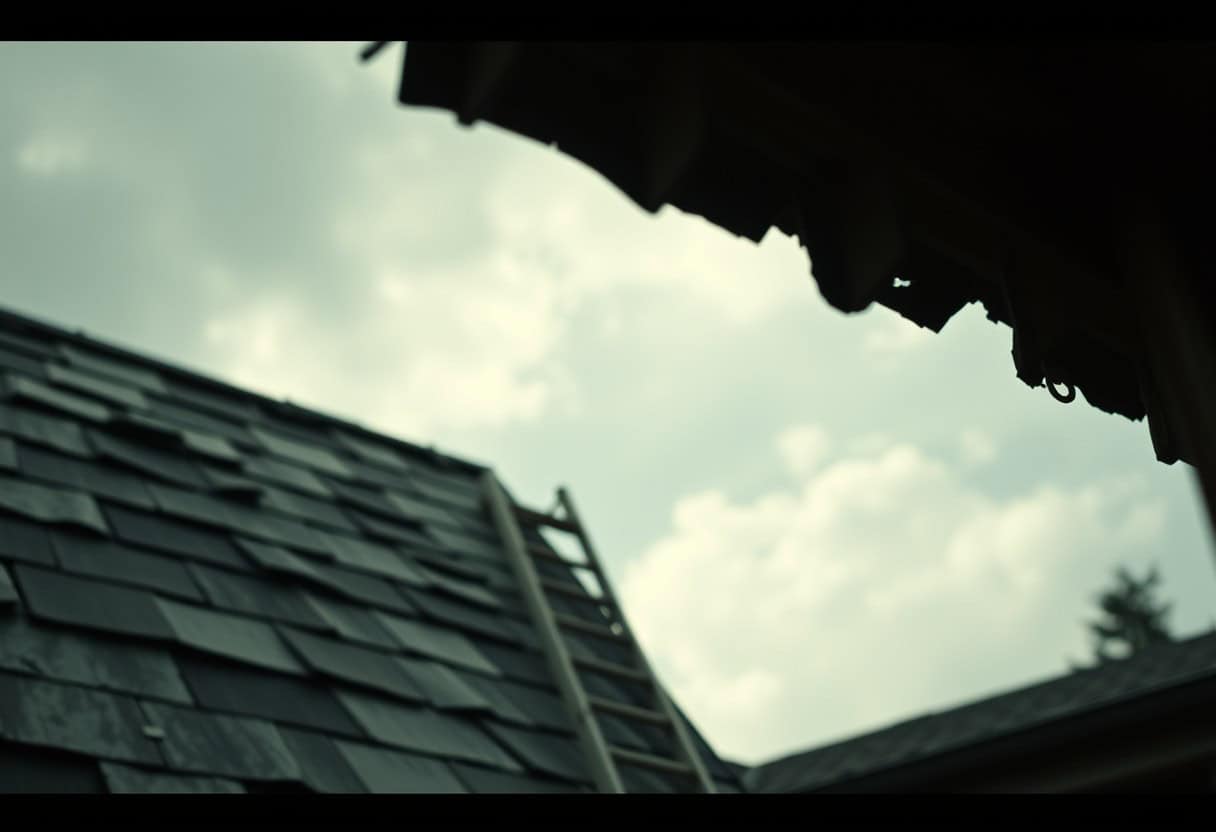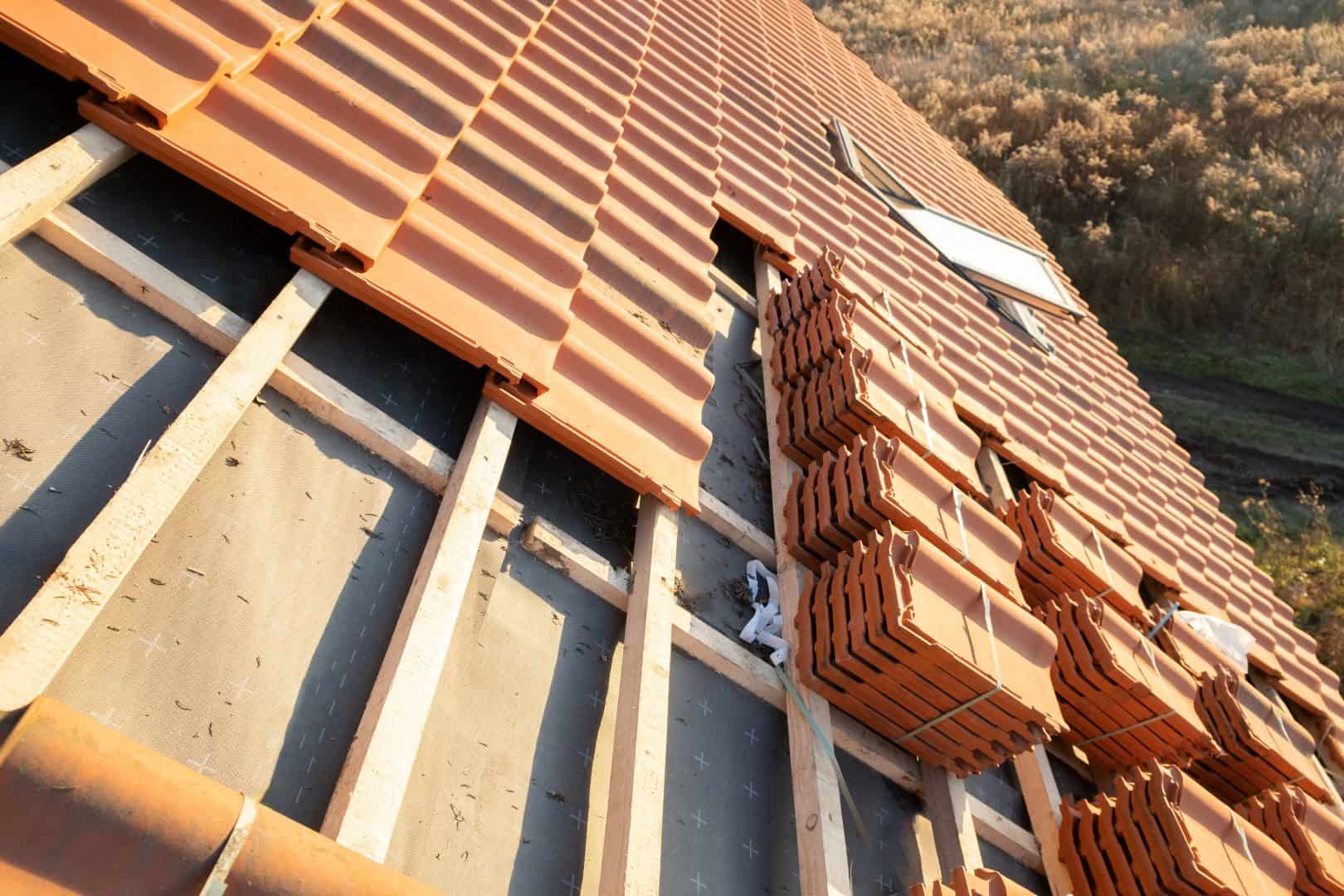What are the signs that I need a new roof?
Fill Out The Form And We'll Get Back To You

Signs that you may require a new roof can often be subtle, yet crucial for the integrity of your home. If you notice missing or damaged shingles, frequent leaks, or signs of mould or rot in your attic, these could indicate serious issues with your roofing. Additionally, if your roof is over 20 years old or exhibits discolouration or sagging, it may be time to consider replacement. Being proactive can save you from costly repairs down the line, ensuring your home remains safe and secure.
Common Signs of Roof Damage
To identify when your roof might need replacing, it’s crucial to be vigilant about the signs of damage. Many of these signs can occur slowly over time, and if you catch them early, it can save you from extensive repairs or costly replacements. Regularly inspecting your roof can assist in recognising problems such as missing shingles, curling edges, or any other forms of distress. By being aware of these common indicators, you can act promptly and ensure the integrity of your home remains intact.
Missing or Damaged Shingles
Signs of missing or damaged shingles are often visible from the ground, making them one of the more straightforward issues to detect. If you observe any patches where shingles are missing or notice that shingles are cracked, broken, or otherwise compromised, this needs immediate attention. Roofs should ideally have a complete layer of shingles to function correctly, and when that layer is disrupted, it can lead to serious problems such as leaks or water damage within your home.
Curling or Buckling Shingles
With curling or buckling shingles, the signs often indicate that your roof is significantly aging or failing. Curling typically occurs when the edges of the shingles start to lift and twist, while buckling can appear as noticeable waves across the surface. Both conditions are red flags that should not be ignored, as they may compromise the roof’s ability to shed water and protect your home effectively.
Understanding the causes of curling and buckling shingles can help you prevent further damage to your roof. These issues generally arise from factors such as temperature fluctuations, improper installation, or poor ventilation in your roof space. When shingles lose their integrity, this can lead to water infiltration, increasing the risk of mould growth and structural damage. Addressing these problems early can save you considerable time and money, ensuring your roof provides the protection your home needs.
Signs of Interior Damage
Even the most minor signs of interior damage can indicate that your roof may need urgent attention. It’s crucial to recognise these signs early, as they can lead to significant issues if left unaddressed. Your home is your sanctuary, and a compromised roof can jeopardise not only your comfort but also the structural integrity of your property. Being vigilant about any changes in your ceiling or walls can save you considerable time, money, and stress in the long run.
Water Stains on Ceilings and Walls
For many homeowners, the appearance of water stains on ceilings and walls is often the first obvious sign that something is wrong with the roof. These unsightly marks typically vary in colour from yellow to brown and can indicate that water is seeping through your roof’s structure, possibly from a leak or a breach. Ignoring these stains can lead to more severe problems, such as mould growth or further structural damage, so it’s imperative to take immediate action if you notice them.
Mold and Mildew Growth
To compound the issue, the presence of mould and mildew in your home can point to lingering moisture trapped in your walls, ceilings, or other areas due to a failing roof. This kind of growth not only affects the aesthetics of your home but also poses serious health risks. Poor indoor air quality can lead to respiratory issues and allergic reactions, especially for those with pre-existing conditions. Therefore, if you discover mould or a persistent musty smell, it’s imperative to investigate the source, which may well be linked to an ageing or damaged roof.
Another pivotal consideration is how mould and mildew can spread quickly throughout your home if not addressed. They thrive in damp environments, meaning that once they take hold, they can rapidly infiltrate other areas, compromising the health of your entire living space. This not only creates an undesirable environment but can also lead to expensive remediation efforts. Addressing roof issues promptly not only safeguards your health but also helps you maintain a safe and comfortable home.
Roof Age and Lifespan
Some homeowners may not be aware of how significant roof age is when assessing the need for replacement. As a general rule, roofs have a certain lifespan based on the materials used, and understanding this can be crucial for your maintenance decisions. If your roof is approaching the end of its expected lifespan, it may be time to consider a replacement. For further insight, you can check out 7 Signs Your Roof May Need To Be Replaced. Regular inspections and being aware of your roof’s age can save you costly repairs down the line.
Typical Roof Lifespan by Material
Roof materials significantly affect its overall lifespan. For instance, asphalt shingles typically last around 20-30 years, whereas metal roofs can endure for 40-70 years, and slate roofs might even last up to 100 years when properly maintained. You should consider the material of your roof when determining its likely longevity. Additionally, the local climate and the quality of installation can also play major roles in how well your roof holds up over time.
When to Consider Replacement
Lifespan is not the only factor to consider when deciding whether to replace your roof. If you notice frequent leaks, persistent moss growth, or excessively curling shingles, these could be signs that your roof is not functioning correctly, regardless of its age. Ignoring these issues might lead to significant structural damage, so it’s wise to assess your roof regularly.
Lifespan alone should not determine the fate of your roof; consistent wear and tear, combined with signs of damage, warrant your attention. Taking proactive measures such as scheduling inspections and addressing minor repairs promptly can enhance your roof’s durability and potentially extend its lifespan. However, if you’ve been experiencing major issues, it may be in your best interest to consult a professional for a thorough evaluation and consider a replacement to ensure the safety and protection of your home.
Assessing Roof Ventilation
After determining the overall condition of your roof, it’s important to evaluate its ventilation. Poor ventilation can lead to numerous issues, affecting both your roof’s lifespan and your home’s energy efficiency. To identify if you need a new roof, consider examining 9 Signs you May Need to Replace Your Roof that may be exacerbated by inadequate airflow.
Indicators of Poor Ventilation
One of the primary indicators of poor ventilation is the presence of excessive heat in your attic. If you find it uncomfortably warm during the summer months, this could suggest that your roof is not effectively allowing heat to escape. Moreover, you may also notice signs of condensation on your roof’s underside, which can lead to mould growth or structural damage over time.
Consequences of Inadequate Ventilation
Assessing your rooftop’s ventilation is crucial, as inadequate airflow can result in serious consequences for your home. Poor ventilation leads to an accumulation of heat and moisture, which significantly accelerates the degradation of roofing materials, thus reducing the lifespan of your roof. Furthermore, this situation can contribute to costly repairs due to issues such as rotting wood, damage to insulation, and even ice dam formation during winter months.
Poor ventilation not only compromises your roof but can also affect your overall home environment. You might experience increased energy costs as your heating and cooling systems work harder to maintain your desired temperature. Additionally, the moisture buildup can lead to harmful mould growth, posing health risks and causing further damage to your property. Recognising these indicators early can save you from extensive and costly repairs in the long run.
Neighborhood Considerations
Unlike many home improvement projects, the decision to replace your roof often extends beyond your own property boundaries. The condition of roofs in your neighbourhood can serve as a telling indicator of when you may need to consider a new one for your own home. If you notice neighbouring houses with newly installed roofs or visible signs of wear and tear on many homes in your vicinity, it might be time to evaluate the state of your roof. Note, a well-maintained roof not only protects your home but also contributes to the overall aesthetics and value of your neighbourhood.
Moreover, the specific characteristics of properties in your area can also influence your roofing choices. For instance, if you live in a region prone to severe weather conditions or specific environmental factors, it’s crucial to be aware of how these might affect your roof’s lifespan. An increase in roofing projects in your area could indicate rising concerns about weather-related wear, prompting you to assess your own roof’s viability sooner rather than later.
Impact of Weather and Environment
One of the significant factors that can accelerate the need for a new roof is the impact of weather and environmental conditions. If your area experiences heavy rainfall, extreme temperatures, or strong winds, your roof takes a considerable beating over time. This constant exposure not only deteriorates the roofing materials but can also lead to urgent repair needs or outright failures. It is vital for you to regularly inspect your roof for any damage, especially after severe weather events, ensuring that you mitigate potential issues before they become significant problems.
In addition, environmental factors such as pollution and the presence of nearby trees can also influence the condition of your roof. For instance, uprooted branches or accumulated leaves can trap moisture, leading to rot and decay. Being proactive about these potential threats can save you time and money in the long run. Always consider how the weather and environment surrounding your neighbourhood might affect your specific roofing situation.
Trends in Nearby Roof Replacements
Trends in roof replacements in your neighbourhood can provide significant insights into when you might need to act yourself. If you observe a higher frequency of roof replacements, it could indicate that homes in your area are succumbing to age or environmental challenges. Familiarising yourself with these trends can help you gauge the timeline for your own roof replacement.
Replacements occurring in your neighbourhood should not be taken lightly. They may signal underlying issues related to the weather and age of the roofs, indicating that your home could be following a similar path if it hasn’t been recently updated. Stay informed about changes within your community, as it can often prompt you to carefully assess your own roof and consider a replacement sooner rather than later. By paying attention to your surroundings, you can make informed decisions that ultimately lead to a safer and more appealing home.
Professional Roof Inspection
Now, seeking a professional roof inspection is crucial for every homeowner who desires to maintain the longevity and integrity of their property. A thorough inspection performed by a qualified expert will identify any potential issues before they escalate into more significant problems. Regular inspections not only provide peace of mind but can also save you from costly repairs down the line.
Importance of Regular Inspections
One of the primary reasons for scheduling regular roof inspections is to catch early signs of damage. Weather conditions, age, and environmental factors can severely impact your roof’s condition over time. By addressing problems early, you can often avoid the need for a complete replacement, ultimately extending the lifespan of your roof.
Additionally, a well-maintained roof is vital for ensuring the overall energy efficiency of your home. Any weaknesses or defects can lead to drafts and moisture intrusion, which not only affect indoor comfort but also contribute to higher energy bills. Regular inspections play an integral role in keeping your roof in optimal condition.
What to Expect from an Inspection
One of the first things that you can expect during a professional roof inspection is a comprehensive examination of your roofing materials. The inspector will assess the condition of shingles, flashing, gutters, and ventilation systems to identify any signs of worry. Depending on the urgency of the inspection, you might also receive recommendations for preventative measures or specific repairs to prolong the health of your roof.
During the inspection process, you may also be educated on preventative maintenance practices that you can implement. This education empowers you to take proactive steps in caring for your roof, allowing you to maintain its condition between professional inspections.
Inspection results will typically include a detailed report outlining the findings, highlighting any immediate concerns, and providing a summary of maintenance recommendations. When you choose to invest in regular professional inspections, you are ensuring the structural integrity and safety of your home, whilst prolonging the life of your roof.
Summing up
Hence, recognising the signs that you require a new roof is vital for maintaining the integrity of your home. If you observe curling, missing, or broken shingles, significant wear and tear could mean that your roof’s lifespan is nearing its end. Additionally, leaks inside your home, sagging areas on your roof, or mould and mildew can be indicators of underlying damage that may necessitate a complete roof replacement. Ignoring these signs can lead to more extensive and costly repairs down the line.
It is crucial to carry out regular inspections and be proactive about roof maintenance. If you find granules from shingles in your gutters or notice daylight shining through your attic, these are further signs that your current roof may not provide the protection you need. Consult a professional roofer to assess the condition of your roof if you suspect any issues, as they can provide an expert opinion on whether a repair is sufficient or if a new roof is advisable for your safety and home’s value.
FAQ
Q: What are the most common signs that indicate I need a new roof?
A: There are several key indicators that suggest you may need a new roof. Look for visible signs of damage such as missing, curled, or cracked shingles. Additionally, check for sagging areas on the roof surface or dark streaks, which might indicate water damage. Inside your home, watch for leaks or water stains on ceilings and walls, as these could point to roofing issues. If you notice a significant accumulation of granules in your gutters, it can indicate that your shingles are deteriorating and nearing the end of their life.
Q: How often should I have my roof inspected to avoid the need for a replacement?
A: It is advisable to have your roof inspected at least once a year, as well as after severe weather events such as storms or heavy snowfall. Regular inspections help identify minor issues before they become major problems that could necessitate a complete roof replacement. Additionally, if your roof is approaching the end of its expected lifespan—typically 20 to 25 years for asphalt shingles—you may want to schedule more frequent assessments to monitor its condition closely.
Q: Can I determine if I need a new roof from the ground, or do I need to get on the roof?
A: While some signs can be assessed from the ground, such as sagging or missing shingles, a comprehensive evaluation usually requires closer inspection. Using binoculars can help you see potential issues more clearly from a distance. However, to accurately assess the condition of your roof’s materials and underlying structures, it is recommended to consult a professional roofer who can safely inspect your roof. They will be able to give you a detailed assessment and advice on whether a replacement is necessary.
New Roof
The guys made a fantastic job of re-roofing our house. They were quick, courteous and excellent value for money.
Chimney Repair
We employed Wrights Roofs to repair our very old chimney – tht had seen better days. They carefully repaired, repointed and re-leaded our chimney which should last me out.
Solar Panel Installs
We had panels that needed putting onto our pitched roof. The guys from Wrights did a great job.
Roofs, Flat Roofs Chimneys and Solar Panels
If you need roof work on your home, please complete the form or call us today.

